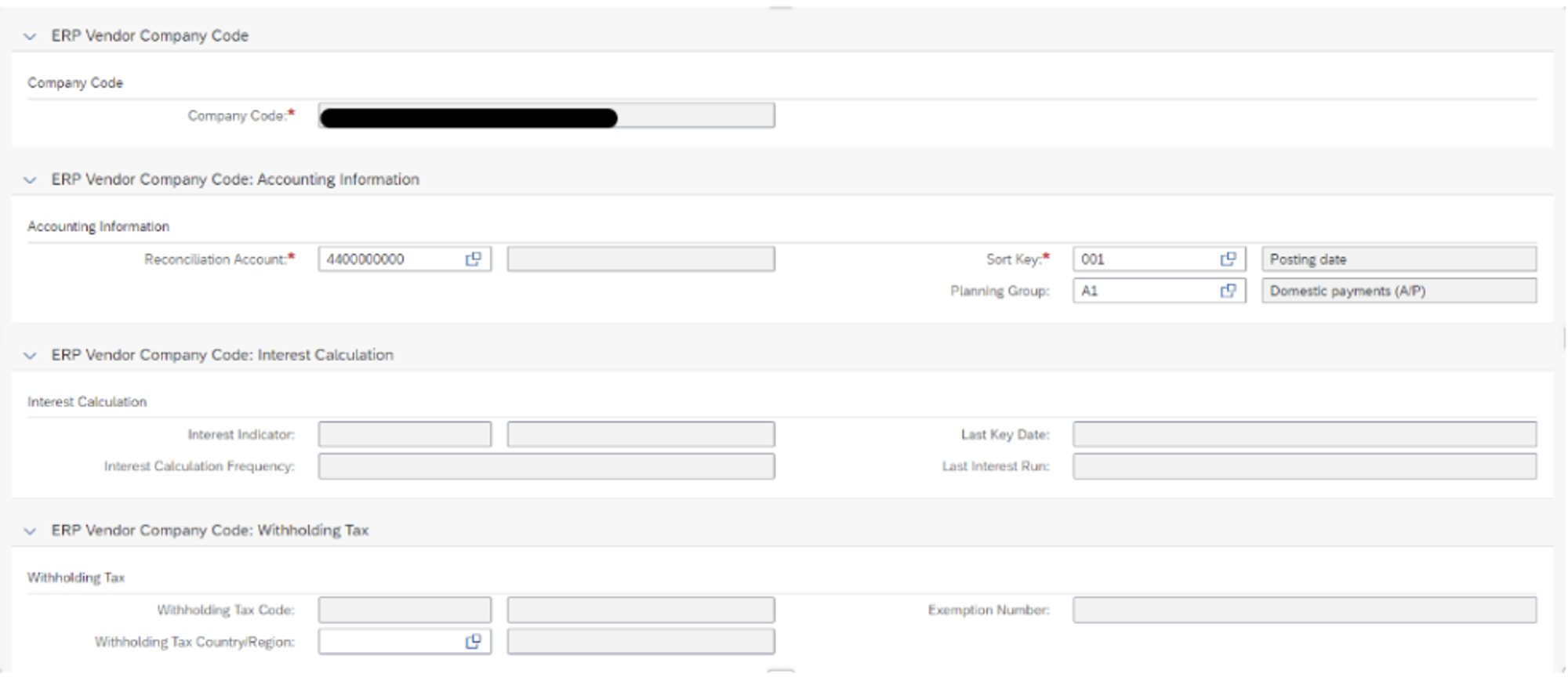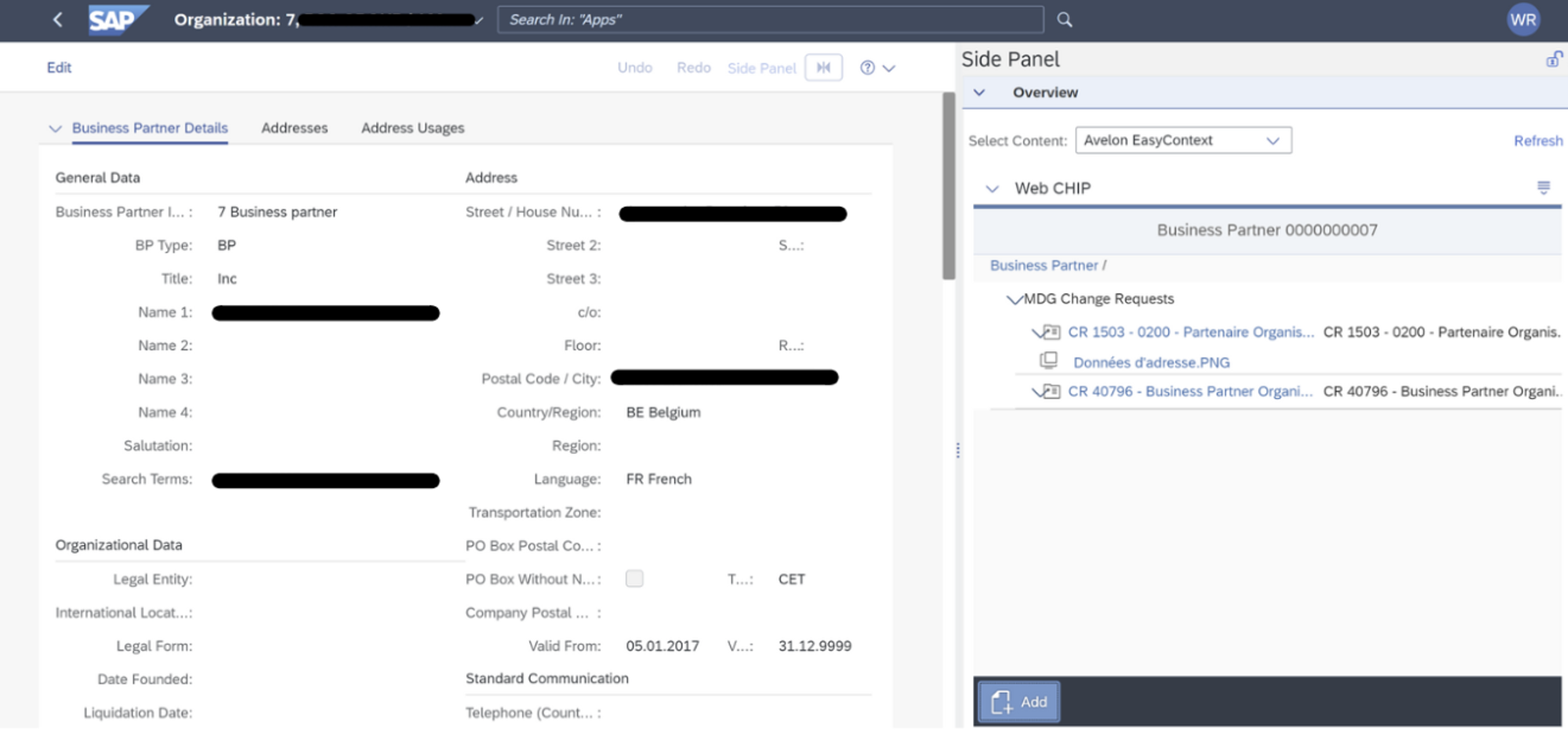Introduction
An organization in the public sector sought a transformation for their outdated, inefficient, and complex processes regarding creating and modifying supplier and customer master data. Their current processes heavily rely on email exchanges among various stakeholders. External business units had to request creation/modification through an online form, leading to bottlenecks for urgent and important changes/creations in master data objects. The derivations and checks in traditional transactions were becoming too complex.
They aimed to use their S/4HANA system as the single source of truth for their business units. Introducing Master Data Governance increased efficiency and simplified existing master data processes. This change enabled a proper governance process with direct involvement from all stakeholders, reducing email exchanges. It allowed them to abandon the need for the online form by providing external business units access to Central Governance, consequently reducing the use of traditional and limited master data maintenance transactions.
Business Partner Governance
During the installation and configuration of the central Governance module of SAP MDG, three initial focus points were:
- The introduction of actual governance
- Taking over their complex validations and derivations of the old transactions
- Installation and configuration of the Alluvion MDG Productivity Pack add-on
The introduction of proper governance allowed them to focus on enforcing the "first-time-right principle." Less time was spent chasing the right person, as the correct people were now directly involved in different master data processes. Access to sensitive data was limited by giving the right person access at the right step in the process and disabling access to certain master data based on the business unit.
The first-time right principle was further enforced by introducing custom validations, derivations, and enrichment through integration with a trusted KBO/BCE/Legal entries register. The integration was easily achieved through our Alluvion MDG Productivity Pack add-on, allowing the plug-in of different data sources. Central Governance also introduced the SAP MDG standard duplicate check to prevent the creation of duplicate master data, revealing shortcomings in both the standard duplicate check and data quality. Poor governance in the past resulted in undetected duplicate master data records, requiring adjustments to the duplicate check.
Besides the MDG central governance add-on, our Alluvion MDG Productivity Pack was also introduced, allowing us to increase user adaptation, experience, and efficiency of the MDG application. This next section will describe the features we introduced and their benefits.
- Sensitivity field features enabling scenario-based step skipping
- Field-properties feature of the validation framework to define different field properties for different steps and conditions
- Notification framework for automated communication at any step during the process
- Checklist functionality allows the addition of actions outside of MDG processes for traceability and logging
- Integration of various features, such as the Alluvion duplicate check with the checklist, improving the SAP MDG standard capabilities.
Sensitive fields & scenario-based step-skipping:
Initially, we activated sensitive field features, enabling steps to be skipped based on scenarios, further boosting process efficiency.
How was this achieved? The sensitive data identified by them were bank details and personal data. This sensitive change would trigger an extra approval; in any other case, this approval was skipped.

Validation Framework – Field-Properties
Secondly, we enabled our field-properties feature of the validation framework. This allows us to define different field properties for the different steps in the process, addressing their need to protect sensitive data from being modified by unauthorized personnel.

Example Requestor UI

Example Masterdata UI
Notification Framework
The next feature we activated was our notification framework, allowing us to send emails to anyone at any step during the process. This facilitated the automation of communication to the initial requestor, informing them that their master data change had been activated. It eliminated the potential for human error while simultaneously expediting the waiting progress for the requestor.
Checklist
Subsequently, we activated the checklist functionality, offering the organization the ability to add actions outside of MDG as part of their MDG processes. This can include a range of tasks, from manual to enrichment tasks. The significant advantage is not only the ability to extend the MDG process but also to have clear traceability and logging of these activities, which is particularly interesting for audit purposes.
Several features were seamlessly integrated into this Checklist, such as the validation framework or a complementary duplicate check to address shortcomings in the SAP MDG standard duplicate check.
All of this resulted in increased logging and traceability.

Follow-up project
After earning trust during the first project, we were contacted again to assist with additional business units wanting to join the MDG single version of truth system. We proposed the consolidation and Mass Processing functionality of Master Data Governance, enhancing Matching for identifying special records, similar to the Central Governance duplicate check.
As part of this project, Data Quality Management was configured to define Data Quality rules in a central repository, leveraging Machine Learning for rule mining. By discovering data patterns in your master data, the ML will propose potential business rules.
Data Quality management facilitates the collaboration between Business and IT, increasing the effectiveness in describing and implementing business rules.
Process Analytics was activated to keep track of change requests and process evolution, with the recent upgrade to S/4HANA, a new functionality that allowed monitoring and analyzing evolution on the work item level.
By analyzing the insights provided by the process analytics functionality, they identified bottlenecks in their current governance processes. We were allowing them to streamline their processes and increase their efficiency.
Document management system project
Finally, an easy way to track different documents and change requests for a business partner was provided through the Alluvion Easycontext solution. In the side panel of traditional transactions or MDG, an overview of all change requests with attachments was available, customized to enforce sensitive data protocols.

For questions on this topic, please fill in the form below, and one of our experts will get in touch soon!

Wout Rerren
Senior SAP Master Data Consultant & Product Owner
Wout Rerren works as a Senior SAP Master Data consultant and Product Owner. Over his career, he's been involved in different projects, from basic MDG setups to complex S/4HANA conversions and Federated on-premise implementations. Apart from that, Wout also manages Alluvion products.
Let's Make Your Story Next!
Your own success story awaits. Click below to begin your personalized experience.
Let's embark on this journey together!
Connect Now for Your Success Story

